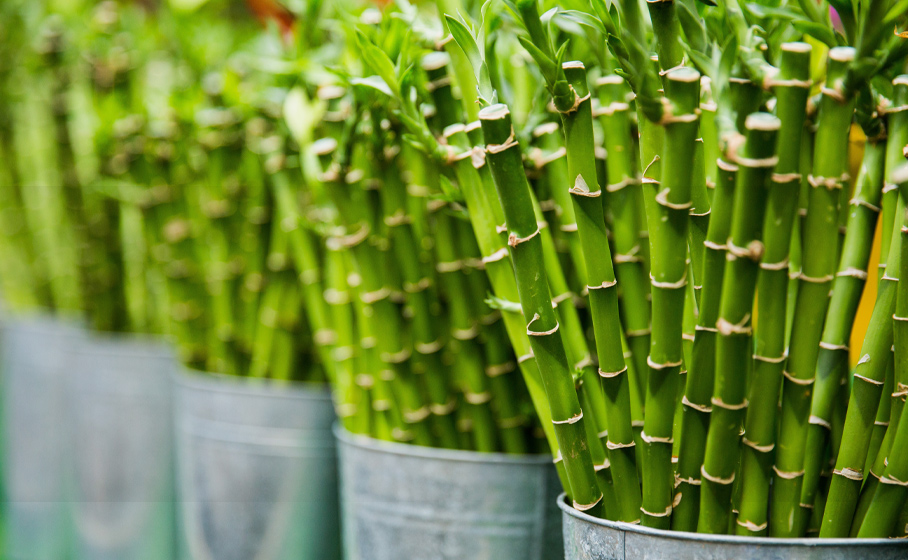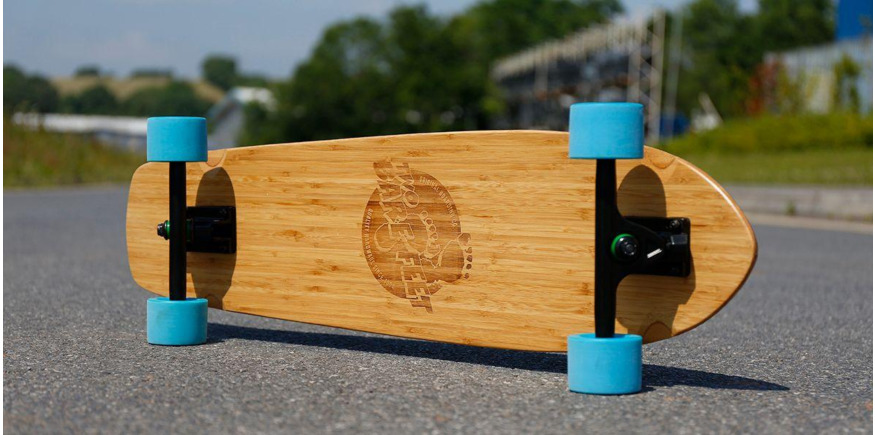A longboard can make the ideal mode of transport, whether you’re on the daily commute or out seeking adventure. Being both durable and stable, longboards are perfect for skaters of all abilities, from complete beginners to skating experts.
But with the huge variety of longboards on the market, it’s easy to be a little daunted when making your purchase. One of the most important variations between boards is the material used to construct the deck. Whilst longboards were traditionally constructed from maple, alternative materials such as plastic and bamboo have become more common.
Bamboo longboards
During the previous decade, skateboard and longboard production overtook the furniture industry as the leading cause of maple tree deforestation. So a new alternative was born: the bamboo longboard.
Bamboo is environmentally friendly
When managed correctly, bamboo farms have a minimal impact on the environment. Unlike maple trees, bamboo is technically a form of grass. If cut properly, it will grow back stronger – ready to be cut again in under five years. On the other hand, once harvested, maple trees essentially die. It can take up to 40 years to recover, which means that maple is not a sustainable material to use with intensive manufacturing methods.
Aside from not contributing to global deforestation, bamboo plants are also regarded for their ability to absorb high levels of carbon dioxide and produce large quantities of oxygen. It can also naturally repair damaged soil, creating a better infrastructure for other plant life.

Bamboo is flexible
In terms of skating quality, a bamboo deck offers added flex–a feature that is sought after by many skaters. A board with flex will absorb any bumps or rough patches of terrain, creating an overall smoother ride. Deck flexibility is also favoured by skaters looking to have some serious fun with their longboard, creating the perfect environment to practise tricks and navigate tight turns.
Lightweight boards
Bamboo is generally considered to be a light material, especially when compared to maple. This makes bamboo the ideal option for those who want a longboard for commuting or travelling – it will be easy to carry when needed.
Being lightweight will also make a longboard more responsive, making tricks far easier than on a heavier board.
Bamboo is a strong material
Luckily, the lightweight nature of bamboo does not inhibit its strength – a bamboo board can withstand increased weights as well as a hard ride on rough terrains without much complaint. Additionally, many longboard manufacturers will reinforce a bamboo deck with other materials, such as fibreglass, for added strength.
Maple longboards
So, what about the original maple longboard? The stigma attached to the skate industry after realising the negative impact it was having on the environment encouraged manufacturers to choose more sustainable sources of maple. This means skaters can continue to opt for a more traditional ride, whilst being mindful of their own impact on the environment.

Maple boards are durable
One of the primary benefits of purchasing a quality maple longboard is how long they last. The high elevation at which maple trees grow results in very tightly packed fibres. This creates an incredibly strong material, perfect for longboard construction. A maple longboard will last year upon year, no matter how hard or fast you ride. Whilst bamboo is strong, many skaters do find that maple boards tend to last longer.
Classic ‘double kick’ skateboards are all made from maple, adding credit to it’s durability. Classic skateboards are subject to far more punishment than a longboard due to performing tricks, meaning they need to be constructed from far sturdier material.
Maple costs less
Generally, maple tends to be a more cost-effective option than bamboo in longboard production. Naturally, this filters down to a consumer, meaning a complete maple deck will be available at a lower price point. However, it is worth considering whether the environment should be sacrificed for the sake of a few pounds.
A stiffer longboard
Whereas bamboo provides flexibility, maple offers stiffness. A stiff deck will provide increased responsiveness and more scope for feedback from under the wheels.
More variety
Maple does remain one of the most popular longboard materials in the world.If you’re on the lookout for a new deck this year, you will most likely find far more choice in terms of board shape and length with maple variants than bamboo.
Should I choose a bamboo or maple longboard?
It comes down to personal preference. In terms of performance, each material lends itself to a specific skating style and aesthetic. Consider how you want to use your board and what you want to get out of your next ride when making your choice.
Yet, in terms of environmental impact, bamboo longboards make for a clear winner. Minimising deforestation as well as helping to naturally repair damaged soils, bamboo is the perfect choice for the ecologically conscious skater.
Whatever your decision, at Two Bare Feet we offer an array of longboard options to meet your needs. Take a closer look at our range of maple longboards, or make a mindful choice after checking out our line-up of bamboo longboards. Whichever you choose, you can rest assured knowing that you will not be sacrificing on quality.




